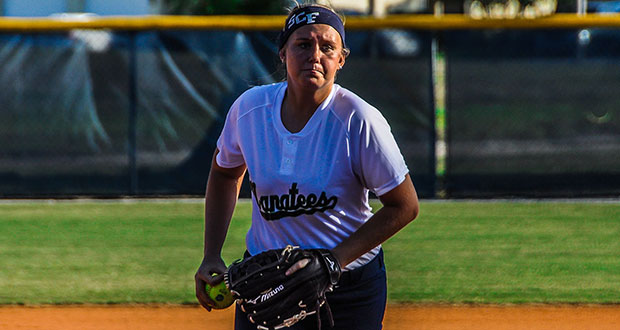The Predictability of Change-Ups in Softball

The Change-up. Arguably the second most important pitch in the game of softball, after the fastball, and one that is becoming too predictable at the younger age groups. Pitchers at the 10U level will be able to get away with throwing Fastballs for strikes. But as pitchers enter into the 12U and above age groups, it’s crucial to have a change of speed to keep hitters off-balance.
Change-ups are becoming too predictable at the younger levels. If you asked a room full of pitchers to hold up what number their change-up sign is, 90% of them would hold up the number two. Am I wrong? It’s the most common number assigned to a pitch, again after the Fastball, which is most commonly used as pitch number one on the pitching sign sheet.
Sign one is fastball and sign two is the change-up. It wouldn’t be that hard to pick signs off the coach calling pitches from the dugout at a summer ball game. Same goes for baserunners on second base. If catchers don’t use another number for location and simply point to where the fastball and change-up are meant to go, it’s easy for a runner on second to tip off the hitter.
Besides using a number two as the change-up sign, change-ups are also becoming too predictable in pitch counts. Many young pitchers are taught to throw change-ups when they are ahead in the count. If you were a spectator watching a 10U or 12U game with a parent coach calling pitches, it would be very common to see a change-up thrown on various 0-2 counts. Predictable, yet these parent coaches know this and continue to call pitches in the same sequence.
Hitters are taught to expect a change-up on a 0-2 count at a young age, so why call something you know they are expecting? How many times have you heard an overly excited parent from the stands holler out, “watch for the change-up” while their daughter is up to bat in a 0-2 count situation.
Pitchers need to be taught at the younger age levels when a “good time” to throw a change-up would be. Coaches who call pitches at these younger levels would benefit from learning these situations as well. Here is a list of the wrong time to throw a change-up at the younger levels.
- 0-2 counts
- When the batter is late on the Fastball
- First time through the order (save it for a different look the second time through)
We have also made a list of the right time to throw a change-up.
- Any count besides 0-2, 1-1, 1-2, and 2-2 are great times for a change-up
- Second time through the batting order
- Batter fouls off multiple fastballs in a row
- No runners on base (for pitchers who are new to throwing change-ups)
The change-up is the second most important pitch in softball after the fastball. The purpose of the change-up is to throw off the batter’s timing by getting them on their front leg and to “trick” them. Don’t succumb to throwing change-ups in predictable or obvious pitch counts and situations. Also, pick a different number to label the change-up and fastball when calling pitches. 90% of pitchers use the same numbers, I challenge you to be the 10% who are different.





